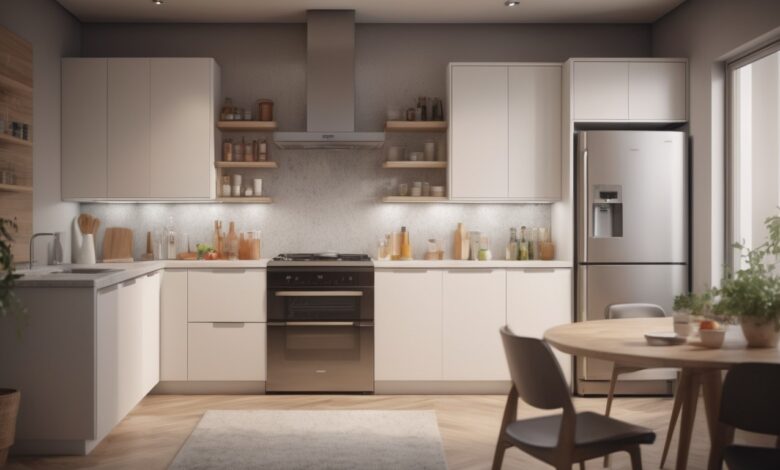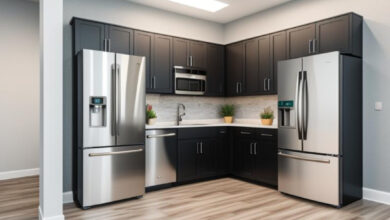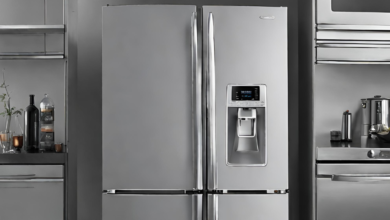Embracing Eco-Friendly Living: The Evolution of Refrigerators with Advanced Technology

In a world where environmental concerns take center stage, the quest for sustainable living has permeated every aspect of our lives. One crucial area that has undergone significant transformation is refrigeration technology. This blog explores the paradigm shift towards environment-friendly refrigerators equipped with cutting-edge technology, ushering in a new era of sustainability and efficiency.
I. The Environmental Impact of Traditional Refrigeration
A. The Ozone Layer Predicament
Traditional refrigerants, such as chlorofluorocarbons (CFCs) and hydrochlorofluorocarbons (HCFCs), have long been known for their adverse effects on the ozone layer. The depletion of the ozone layer contributes to climate change and poses serious health risks.
B. Energy Inefficiency
Conventional refrigerators often consume excessive energy, contributing to high electricity bills and putting additional strain on power grids. As consumers seek energy-efficient solutions, manufacturers are compelled to innovate and develop appliances that align with these eco-conscious demands.
II. Technological Innovations Leading the Charge
A. Hydrofluorocarbon (HFC)-Free Refrigerants
Manufacturers are actively phasing out ozone-depleting refrigerants in favor of more eco-friendly alternatives, such as hydrofluoroolefins (HFOs). HFOs have a lower global warming potential (GWP) and do not harm the ozone layer, making them a pivotal component in the green revolution of refrigeration.
B. Inverter Technology for Energy Efficiency
Inverter technology has revolutionized the energy efficiency of refrigerators. Unlike traditional compressors that operate at fixed speeds, inverter compressors can adjust their speed according to the cooling demand. This not only reduces energy consumption but also prolongs the lifespan of the appliance.
C. Smart Sensors and IoT Integration
The integration of smart sensors and Internet of Things (IoT) technology has enabled refrigerators to optimize their performance based on usage patterns. Smart sensors can detect when the fridge is frequently opened or when the ambient temperature changes, allowing the appliance to adjust settings for optimal efficiency.
D. Frost-Free Cooling Systems
Frost-free refrigerators eliminate the need for manual defrosting, reducing energy consumption and promoting a hassle-free user experience. This technology prevents ice buildup on the freezer walls, ensuring consistent cooling and preserving food quality.
III. Eco-Friendly Materials and Design
A. Sustainable Materials
Manufacturers are increasingly using sustainable materials in the construction of refrigerators. From recycled plastics to eco-friendly insulation materials, these choices not only reduce the environmental impact of production but also enhance the overall sustainability of the appliance.
B. Design for Disassembly
The concept of design for disassembly emphasizes creating products that are easy to dismantle and recycle at the end of their lifecycle. Refrigerators adopting this approach make it simpler to separate and recycle materials, minimizing waste and contributing to a circular economy.
IV. The Role of Energy Star Certification
A. Energy Star as a Benchmark
The Energy Star certification has become a benchmark for energy-efficient appliances, including refrigerators. Products with this certification meet strict energy efficiency guidelines set by environmental protection agencies, giving consumers a reliable indicator of a refrigerator’s eco-friendly credentials.
B. Continuous Improvement Through Energy Star
As technology advances, so do the Energy Star guidelines. Refrigerator manufacturers constantly strive to meet and exceed these evolving standards, pushing the boundaries of innovation to create appliances that not only save energy but also reduce the overall environmental impact.
V. Consumer Awareness and Choices
A. Educating Consumers
Consumer awareness plays a pivotal role in steering the market towards eco-friendly refrigeration. Manufacturers and environmental organizations are working together to educate consumers about the environmental impact of their appliances and the benefits of choosing eco-friendly options.
B. Incentives for Sustainable Choices
Government incentives and rebates further encourage consumers to opt for environment-friendly refrigerators. These incentives may come in the form of tax credits or discounts, providing a tangible reward for making sustainable choices.
VI. The Future of Refrigeration: Challenges and Opportunities
A. Challenges in Phasing Out Traditional Refrigerants
While strides have been made in phasing out ozone-depleting refrigerants, challenges persist. The transition to alternative refrigerants requires careful consideration of their environmental impact, energy efficiency, and long-term viability.
B. Harnessing Renewable Energy
The integration of renewable energy sources, such as solar power, holds promise for reducing the carbon footprint of refrigeration. Future refrigerators may harness clean energy to further enhance their eco-friendly profile.
C. Circular Economy Initiatives
The adoption of circular economy principles within the appliance industry involves reusing and recycling materials to create a closed-loop system. This shift could revolutionize the way refrigerators are manufactured, reducing the environmental impact and promoting sustainability.
Conclusion
As we witness the convergence of environmental consciousness and technological innovation, the landscape of refrigeration is undergoing a remarkable transformation. Environment-friendly refrigerators, equipped with advanced technology, stand as a testament to our collective commitment to a sustainable future. By embracing these innovations, consumers not only reduce their carbon footprint but also pave the way for a greener and more efficient tomorrow. The journey towards eco-friendly living continues, with refrigeration at the forefront of this transformative movement.






